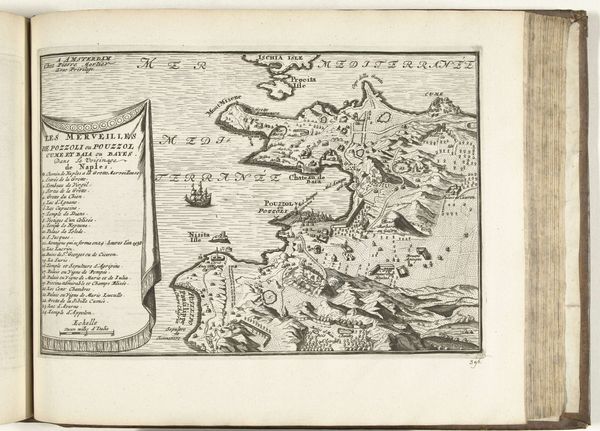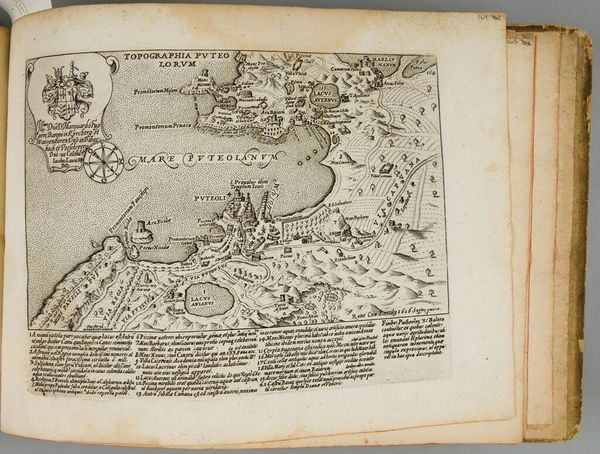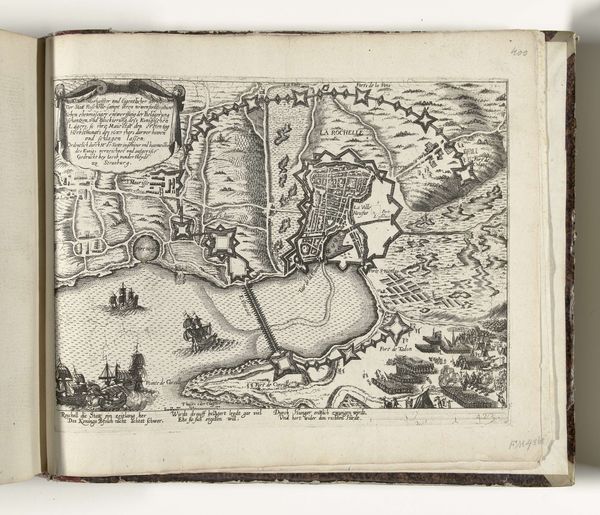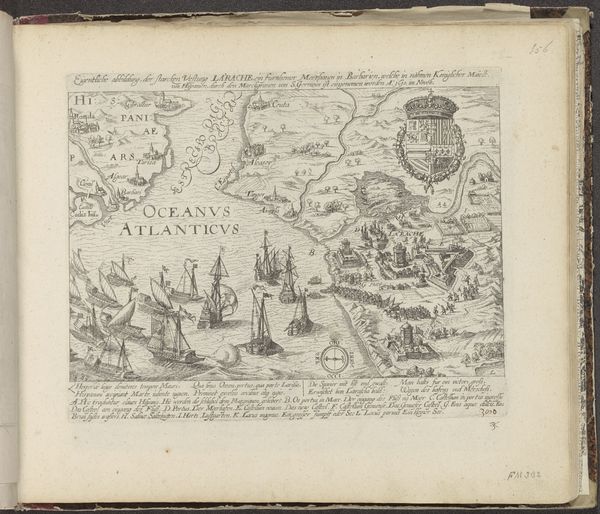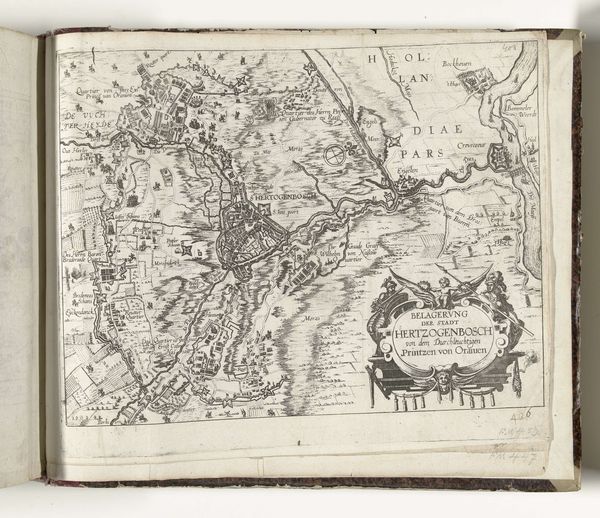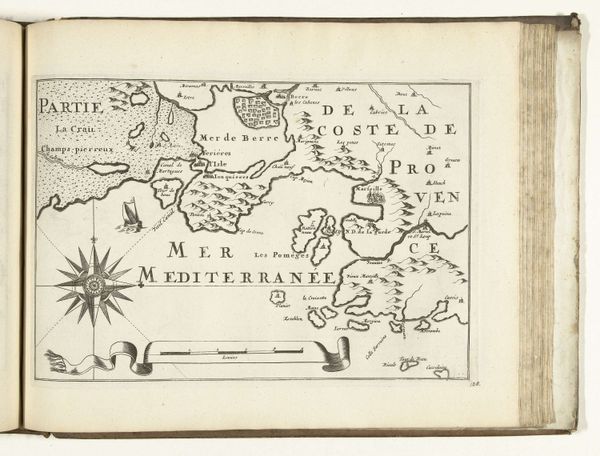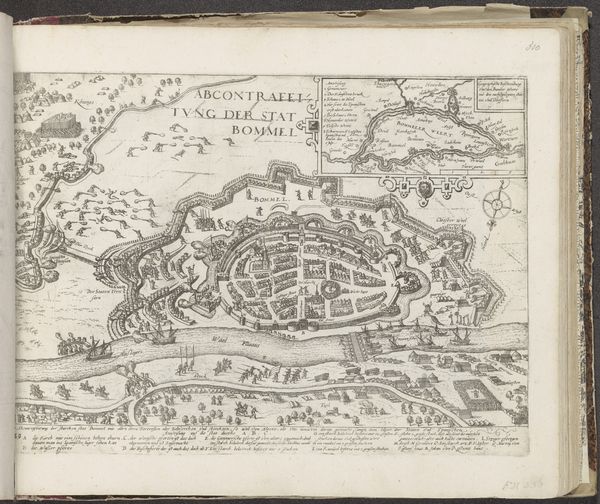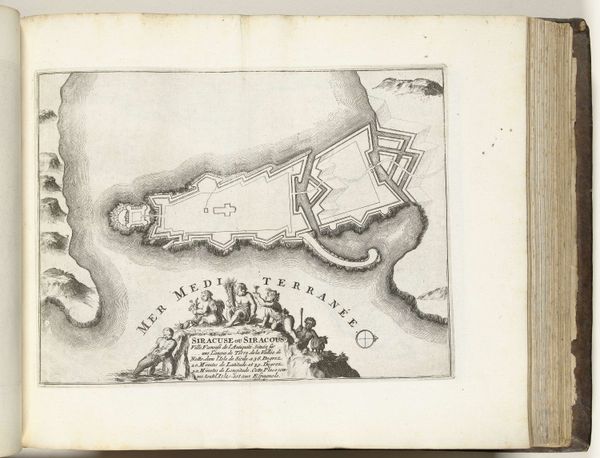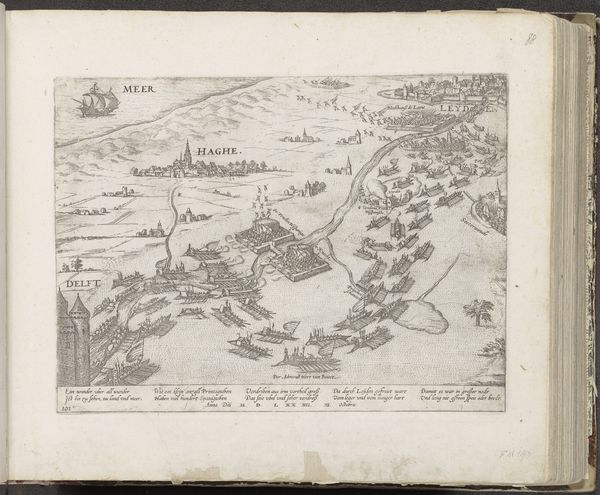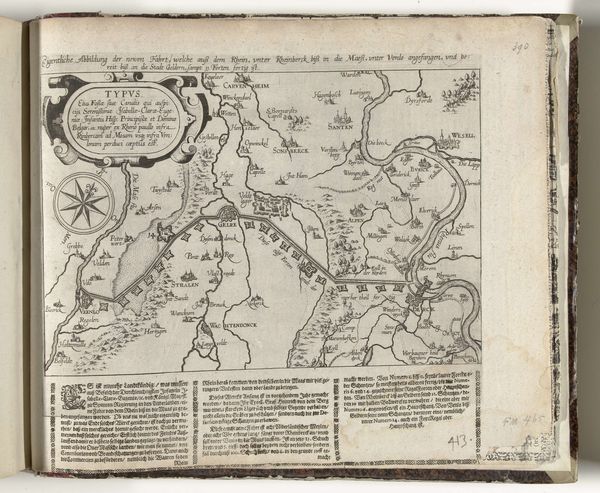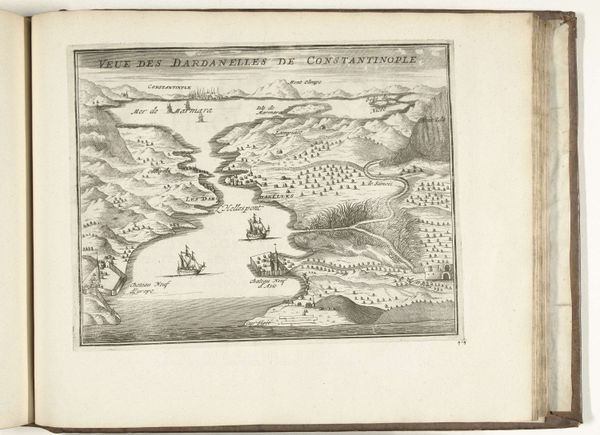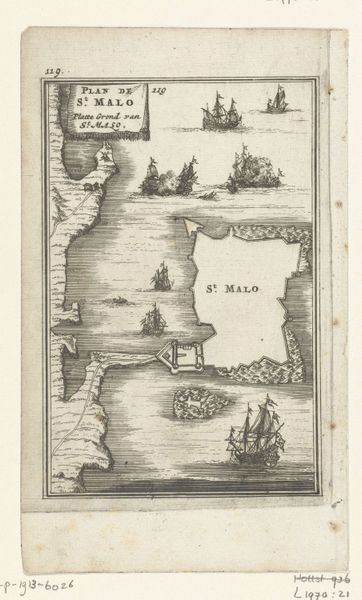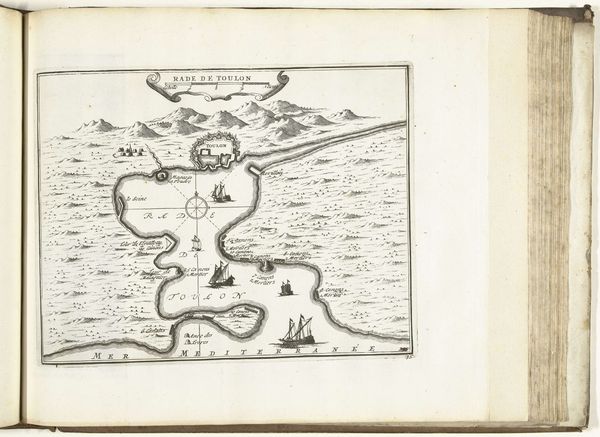
print, engraving
#
dutch-golden-age
# print
#
landscape
#
history-painting
#
engraving
Dimensions: height 105 mm, width 145 mm
Copyright: Rijks Museum: Open Domain
Curator: Here we have "Aankomst van de zeven schepen bij de straat Waygats, 1595," an engraving dating to 1598. The creator remains anonymous, though it resides in the Rijksmuseum’s collection. Editor: It’s remarkably busy for such a small-scale work! The density of figures and ships almost overwhelms the implied narrative of exploration and arrival. I’m also drawn to its stark black-and-white aesthetic; there’s something quite immediate about it. Curator: Yes, the dynamism is intriguing, particularly considering it’s a print. Look at the detail afforded to each vessel, and the distinct, swirling patterns used to evoke the "Nort See." The composition is masterful, carefully balancing pictorial information with text to define geographic features and location names, like Nova Zembla. Editor: Absolutely, but how does the historical context shape our understanding? These "arrivals" often heralded violent colonial encounters. This engraving visualizes not merely geographical exploration but also the dawn of resource exploitation and cultural disruption for the local population, those labeled rather vaguely as being from “Samiten Lands”. Curator: Certainly. The very structure echoes that colonial gaze: ships and geographical data rendered with precision contrasted against a blurred sense of those who actually inhabited this land. This reflects the aesthetic project of Dutch Golden Age landscape, which sought not only to depict but also claim the landscape itself. Editor: The "Mare Glaciale" looms threateningly in the upper right. That term translates literally to the "Frozen Sea" in English and, it becomes, an eerie metaphor of a cold, uninhabitable domain soon ripe for plunder. We must not decouple this print from the wider political theatre in which it was conceived. Curator: Your reading gives us access to nuanced cultural understanding, layering theory onto its form. Editor: Hopefully it serves as a starting point for further inquiry, so one may then deconstruct its visual rhetoric. Curator: Precisely, offering layered perspectives reveals more. Editor: A palimpsest of meaning.
Comments
No comments
Be the first to comment and join the conversation on the ultimate creative platform.
